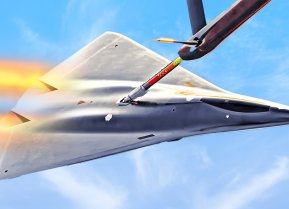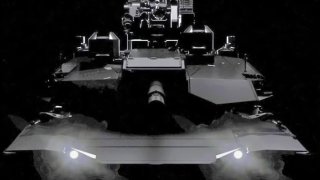XM1202: The 'Super' Tank That Almost Replaced the M1 Abrams
Boeing and BAE Systems teamed up in the early 2000s to develop the Future Combat Systems (FCS) Manned Ground Vehicles, including the XM1202, which was designed to replace the M1 Abrams tank.
Summary and Key Points: Boeing and BAE Systems teamed up in the early 2000s to develop the Future Combat Systems (FCS) Manned Ground Vehicles, including the XM1202, which was designed to replace the M1 Abrams tank.
-The XM1202 featured a 120 mm autoloaded gun, machine gun, and grenade launcher, offering versatile firepower.
-FCS was part of a larger $200 billion Army transformation program aimed at creating a lighter, modular, and interconnected force.
-However, in 2009, Defense Secretary Robert Gates canceled the FCS program in favor of a new Brigade Combat Team modernization strategy, leaving the M1 Abrams in service.
The XM1202: How the U.S. Army's M1 Abrams Tank Replacement Never Left the Drawing Board
Boeing and BAE Systems teamed up in the early 2000s to develop a multipart series of armored vehicles known as the Future Combat Systems Manned Ground Vehicles, or FCS. The project included similar tracked vehicles of different varieties. Taken together, they would conduct a variety of missions. The variants included a reconnaissance and surveillance vehicle; non-line-of-sight cannon; non-line-of-sight mortar; field recovery and maintenance vehicle; infantry carrier vehicle; medical vehicle; command and control vehicle; and the mounted combat system, also known as the XM1202.
In sum, the project was massive: “A multiyear, multibillion dollar program at the heart of the Army’s transformation efforts,” the Congressional Research Service reported. “It was to be the Army’s major research, development, and acquisition program, consisting of 13 manned and unmanned systems tied together by an extensive communications and information network.”
The ultimate goal of the FCS program was to make the U.S. Army lighter, more modular, and easier to deploy. The idea was that a lighter and more mobile Army would be able to outmaneuver enemies in the field. It was not without controversy, however. Some Army brass believed in a bigger, heavier approach to armored vehicle development, a belief that the M1 Abrams embodied. The FCS-led transition was intended to occur gradually over the course of three decades.
As something of a harbinger to the interconnectivity of forthcoming fighter platforms like the F-35 Joint Strike Fighter, the FCS family of vehicles was expected to feature a networked “system of systems” by which the vehicles shared information and enhanced the entire Army’s situational awareness.
Let’s take a closer look at the XM1202, specifically.
Introducing the XM1202
The XM1202 was just one of several variants of the FCS Manned Ground Vehicles project. It was designed as a replacement for one of America’s most iconic tanks, the M1 Abrams main battle tank.
The XM1202 was designed to deliver significant firepower to the battlefield, with capabilities for both direct and indirect fire and a maximum firing range of 5 miles. The concept called for the XM1202 to deliver fire at a rapid rate – that was the whole point, really, providing firepower.

The hope was that the XM1202 would be effective at supporting infantry in the field, as well as busting bunkers and knocking down walls in assault situations. To provide such versatile firepower, the XM1202 was to feature an autoloaded 120 mm main gun, one 12.7 mm (.50 caliber) machine gun, and one 40 mm automatic grenade launcher.
Canceling the order
The FCS program was ultimately canceled. In 2009, Secretary of Defense Robert Gates guided the Army down a different path, namely a new Brigade Combat Team modernization strategy, with a new set of strategy directives.
The FCS program was left on the drawing board, and the M1 Abrams tank the XM1202 was intended to replace is still in service today.
About the Author: Harrison Kass
Harrison Kass is a defense and national security writer with over 1,000 total pieces on issues involving global affairs. An attorney, pilot, guitarist, and minor pro hockey player, Harrison joined the US Air Force as a Pilot Trainee but was medically discharged. Harrison holds a BA from Lake Forest College, a JD from the University of Oregon, and an MA from New York University. Harrison listens to Dokken.
Image Credit: Creative Commons.


